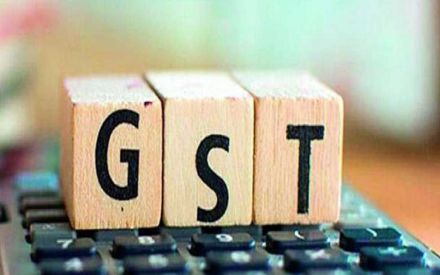GST is an Indirect Tax which has replaced many Indirect Taxes in India. The Goods and Service Tax Act was passed in the Parliament on 29th March 2017. The Act came into effect on 1st July 2017; Goods & Services Tax Law in India is a comprehensive, multi-stage, destination-based tax that is levied on every value addition.
In simple words, Goods and Service Tax (GST) is an indirect tax levied on the supply of goods and services. This law has replaced many indirect tax laws that previously existed in India.
GST is one indirect tax for the entire country.
Under the GST regime, the tax is levied at every point of sale. In the case of intra-state sales, Central GST and State GST are charged. Inter-state sales are chargeable to Integrated GST.

1. Types of GST returns:
1- GSTR 1- Details of outward supply of goods or services :
- A registered taxable person shall furnish electronic statement of the details of outward supplies of goods and services for the tax period on or before the 10th of succeeding tax period.
- And shall include details of an invoice, debit notes, credit notes and revised invoices issued during the tax period.
2-GSTR 2- information about the inward supply of goods or services :
- A registered person shall furnish the detail of inward supplies of goods and services including the goods and services under reverse charge basis and goods and services received under IGST.
- The return shall be filed in GSTR -2 after the end of 10th day but before 15th day of the following month from the end of the tax period.
3- GSTR 3B- This is another type of gst return.monthly return containing details of taxes collected on outward supplies and details of taxes paid on input supplies. (No invoice level details) Note: The return is to be filed even if there is no business activity for any period under tax (Nil return in such cases)
OTHERS TYPES ARE:
- GSTR 4
- GSTR 4 A
- GSTR 5
- GSTR 5A
- GSTR 6
- GSTR 7
- GSTR 8
- GSTR 9
- GSTR 9C
- GSTR 11
How To File GST Return:
– Make sure that you are registered under GST and have the 15-digit GST identification number with you based on your state code and PAN. In case you do not have this number, first register online to get it.
– Next, visit the GST portal to file gst return or you can simply click here & fill the form to receive a call back.
– Click on the ‘Services’ button.
– Click on ‘Returns dashboard’ and then, from the drop-down menu, fill in the financial year and the return filing period.
– Now select the return you want to file and click on ‘Prepare online’.
– Enter all the required values including the amount and late fee, if applicable.
– Once you have filled in all the details, click on ‘Save’ and you will see a success message displayed on your screen.
– Now click on ‘Submit’ at the bottom of the page to file the gst return.
– Once the status of your return changes to ‘Submitted’, scroll down and click on the ‘Payment of tax’ tile. Then, click on ‘Check Balance’ to view cash and credit balance, so that you know these details before paying tax for respective minor heads. Next, to clear your liabilities, you need to mention the amount of credit you want to use from the credit already available. Then click on ‘Offset liability’ to make the payment. When confirmation is displayed, click on ‘OK’.
– Lastly, check the box against the declaration and select an authorised signatory from the drop-down list. Now click on ‘File form with DSC’ or ‘File form with EVC’ and then click on ‘Proceed’. Make the payment in the next step for your respective GST form.












